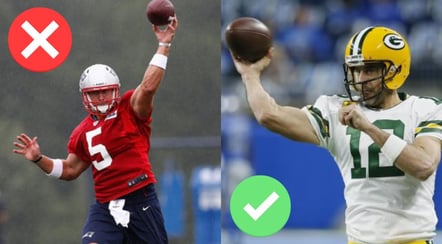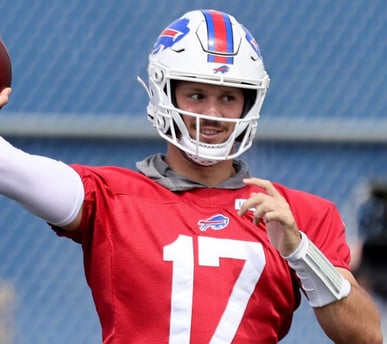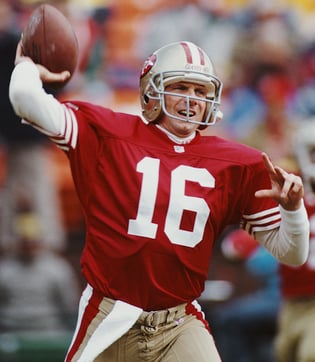Throwing Mechanics
Evolution of Quarterback Mechanics
Old School vs. New School Quarterback Mechanics: The Shift to Rotational Throwers
The evolution of quarterback mechanics has drastically transformed how the position is played, shifting from traditional techniques to modern, dynamic approaches. One of the most significant changes is the transition from linear throwing mechanics to a focus on rotational throwing, with a greater emphasis on hip movement.
Old School Mechanics: The Linear Approach
Historically, quarterbacks were often taught a linear throwing style. This method emphasized:
Stationary Posture: Old school quarterbacks, like Johnny Unitas and Joe Montana, relied heavily on a solid, planted base while delivering passes from the pocket.
Upper Body Dominance: The focus was primarily on upper body mechanics, with a high release point and a straight-back throwing motion. This approach limited the utilization of lower body power and the natural rotation of the torso.
New School Mechanics: The Rise of Rotational Throwers
In contrast, modern quarterbacks have embraced a more holistic approach that incorporates rotational mechanics. Key aspects include:
Hip Engagement: New school quarterbacks, such as Patrick Mahomes and Lamar Jackson, utilize their hips more effectively to generate torque. The hips initiate the throwing motion, allowing for a more powerful and efficient release.
Rotational Power: By leveraging the kinetic chain, modern quarterbacks create a dynamic motion that enhances throwing distance and velocity. This shift allows for more fluid movement and better adaptability under pressure.
The Impact of the Change
The shift to rotational throwing mechanics has led to:
Increased Arm Strength and Accuracy: Engaging the hips allows quarterbacks to generate more power and maintain better accuracy, even when on the run or under duress.
Enhanced Mobility: With the ability to move their bodies independently, quarterbacks can escape pressure more effectively and make off-platform throws, adding a new dimension to their game.
Conclusion
The transition from old school linear mechanics to new school rotational techniques represents a significant evolution in quarterback play. By emphasizing hip movement and rotational power, today’s quarterbacks are not only more effective passers but also versatile playmakers capable of thriving in an increasingly dynamic game. This evolution reflects the broader trends in football, where adaptability and athleticism are paramount for success on the field.






